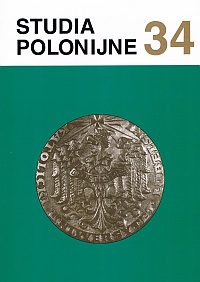Ojciec Józef Grochot. Redemptorysta – wykładowca – kapelan – duszpasterz (1915-1993)
Main Article Content
Abstrakt
Born in Podłęże near Krakow, he graduated from an elementary school in Podłęże, and a secondary school in the Minor Seminary of Redemptorists in Torun. He passed his final secondary school examinations on 3 July 1933, and then joined the Redemptorists. On 2 August 1934, he took the first religious vows, and then began philosophical and theological studies in Tuchow. He received his priestly ordinations on 25 June 1939. After the German attack on Poland on 1 September 1939, he ran away before the German army to Eastern Poland, together with one seminary professor, another newly ordained priest, and three seminary students. When the Red Army attacked Poland on 17 September 1939, he made for Rome (8 October 1939) through Romania i Yugoslavia. When the Redemptorist general board made its decision, prof. Bruno Świtalski together with Fr. Kazimierz Gołębiewski CSsR went to the Polish Army, then being organized in France. Fr. Grochot together with Fr. Kazimierz Kalemba and the seminary students: Leon Dzwonkowski, Marian Kleniarski, and Kazimierz Rutkowski joined the Redemptorist seminary in Cortona (Toskania). From 15 October 1940 onwards Fr. Grochot was Professor for Polish seminarians, and from October 1941 onwards he taught Italian seminary students patrology, and then also history of the Church. From September 1942 to the end of 1944 he sojourned in Marzocca, north of Ancona, with a group of seminary students. When the Polish soldiers conquered this town, he would help the chaplain, the Polish Command, and the field hospital in the monastery garden. On 1 November 1944, he was nominated Chaplain (8th Regiment of Light Artilery?), and in the end of December he was called to the Command of the 10th Regiment of Hussars in Taranto. Later on 7 January 1945, together with his regiment, he went to Egypt. As its chaplain, he stayed in Quassasin, and from 13 May 1945 onwards in El-Amirija near Alexandria. Father Grochot was actively engaged in painting the icon of Our Lady of the Hussars – the patroness of the regiment. When the war ended, the painting wandered together with the regiment in different Polish churches abroad, and in 1978 it was placed a new Polish church in London. In the October of 1945 Fr. Grochot was moved together with the regiment to Italy and situated near Pescara. In the summer of 1946, the 14th Greater Poland Brigade, a part of which was the 10th Regiment of Hussars, left for England. After its disbandment in 1947, Fr. Grochot went to study in Rome. From 1950 onwards, he worked in France, Luxembourg, and Denmark as a priest of Polonia and professor of sociology.

